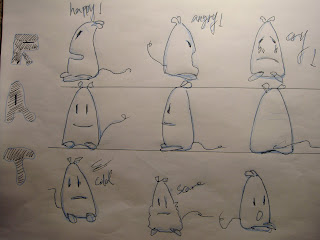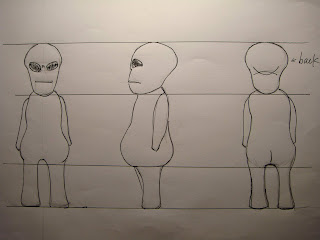180 degree rule
Examples
In the example of a dialogue, if Owen (orange shirt in the diagram) is on the left and Bob (blue shirt) is on the right, then Owen should be facing right at all times, even when Bob is off the edge of the frame, and Bob should always be facing left. Shifting to the other side of the characters on a cut, so that Bob is now on the left side and Owen is on the right, will disorient the viewer, and break the flow of the scene.
In the example of an action scene, such as a car chase, if a vehicle leaves the right side of the frame in one shot, it should enter from the left side of the frame in the next shot. Leaving from the right and entering from the right will create a similar sense of disorientation as in the dialogue example.
An example of sustained use of the 180 degree rule occurs throughout much of The Big Parade, a 1925 drama about World War I directed by King Vidor. In the sequences leading up to the battle scenes, the American forces (arriving from the west) are always shown marching from left to right across the screen, while the German troops (arriving from the east) are always shown marching from right to left. After the battle scenes, when the weary troops are staggering homeward, the Americans are always shown crossing the screen from right to left (moving west) and the Germans from left to right (moving east). The audience's viewpoint is therefore always from a consistent position, in this case southward of the action.
Problems caused and solutions
Avoiding crossing the line is a problem that those learning filmcraft will need to struggle with. In the above example with the car chase, a possible solution is to begin the second cut with the car driving into frame from the "wrong" side. Although this may be wrong in the geographic sense on set, it looks more natural to the viewer. Another possibility is to insert a "buffer shot" of the subject head-on (or from behind) to help the viewer understand the camera movement.
StyleIn professional productions, the applied 180° rule is an essential element for a style of film editing called continuity editing. The rule is not always obeyed. Sometimes a filmmaker will purposely break the line of action in order to create disorientation. Stanley Kubrick was known to do this. The Wachowski Brothers and directors Tinto Brass, Yasujiro Ozu, Wong Kar-Wai, and Jacques Tati sometimes ignored this rule also,[1] as has Lars von Trier in Antichrist_(film).[2]Ant & Dec extend this continuity to almost all their appearances, with Ant almost always on the left and Dec on the right. The British television presenters
Some filmmakers state that the fictional axis created by this rule can be used to plan the emotional strength of a scene. The closer a camera is placed to the axis, the more emotionally involved the audience will be.
In the Japanese animated picture Paprika, two of the main characters discuss crossing the line and demonstrate the disorienting effect of actually performing the action.
In Peter Jackson's Lord of the Rings: The Two Towers Gollum has a conversation with his other personality, assuming he has multiple personality disorder. Because the filmmakers use the 180 degree rule and have the "good" Gollum looking left as he speaks, and the "evil" Gollum looking right, the audience perceives Gollum as two different characters talking to each other.
11 secod audio clips
There are 8 audio clips, so we need choose one of the them. I have choose that one no dialog,
because i want to create some charters who use the body language and action to describe the story.
i have to listen to the audio clip and create some image in my mind
This audio give me first impression about something crash down and some one hit something down.
brainstorm to get ideal
I have got 3 ideals
the first, someone get in the car and then he can not close the door. (main ideal the door can't close)
the second one, someone fix some machine and then the machine crash down.
the last one, some one use tools to hit something down
i have got new ideal: the bee and angry guy
i have listen to audio clip again and again, i want to get new ideal from this audio. finally, i write my story in here, the angry guy siting in his room, finally she found a bean fly in his house, and then he want to use the flapper get over it. finally his computer crash down by himself.
another ideal is about a guys get gum to shot the something down. He needs to shot fly disk down between 8 seconds. But He has five chances to shot it. finally, he use the last bullet to shot fly disk down.
this week i need to finished my character design and storyboard (i need to do choice between that two new ideas )
to create character
i want to design bean character first. so i do some research from internet and download some pic about bean, because i want to know that the bee how to move.


 this is my character design about bee
this is my character design about beethe character from another ideal:
i want to find some picture about shooting, so i do some reserch from internet and try to find some shooting action, and then i will to draw it down.




this background , i got it from internet:















